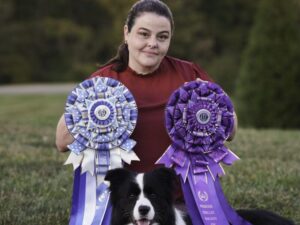
Arcane Kennel | Kelly & Kendra Hayes
Experienced breeders of Arcane Kennel, Kelly and Kendra discuss breed types, health, and the dog show community.
Home » Dog Breeds » Norwegian Buhund Dog Breed
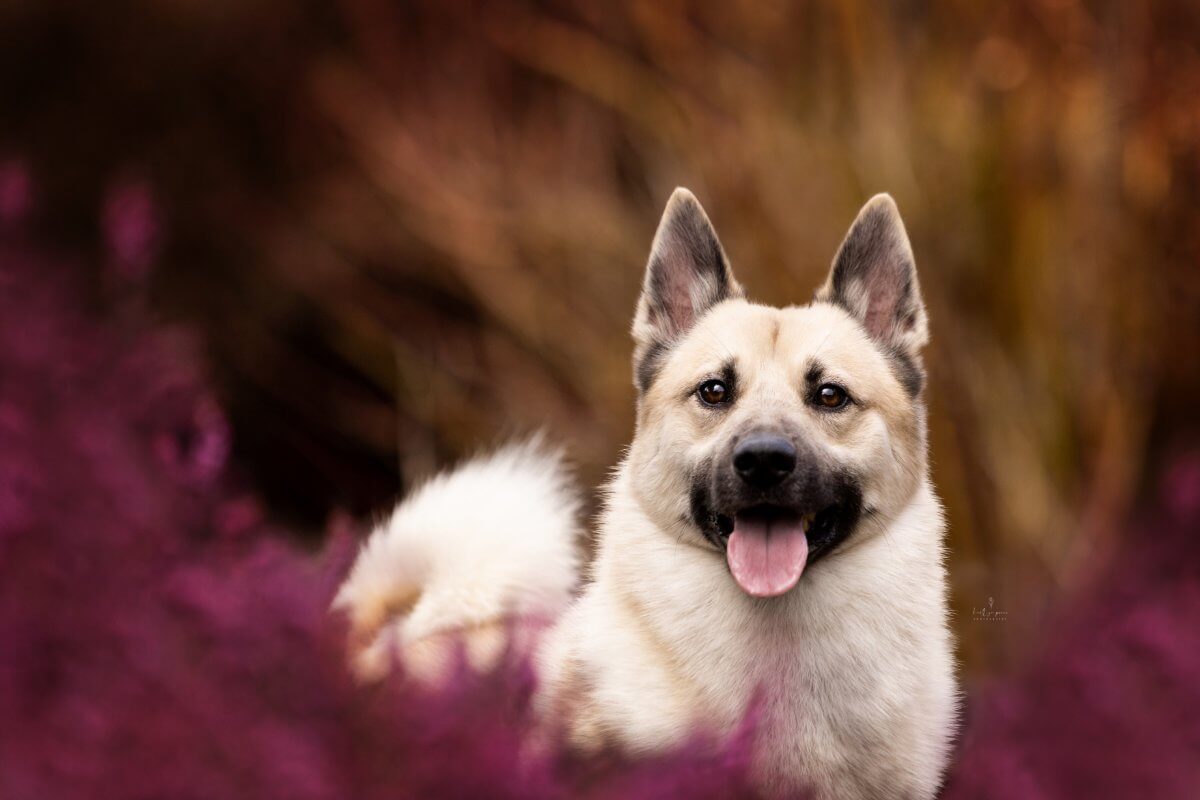
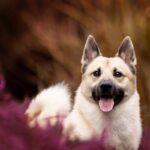
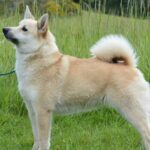
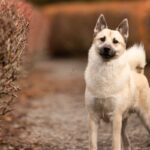
The Norwegian Buhund originated in its namesake country where it was a put to work as a dependable herder of livestock and defender of the homestead. The breed’s intelligence makes it an easy dog to train; however, its independent streak makes consistent training from puppyhood a must. An alert temperament and the tendency to bark make the Buhund an excellent choice as a watchdog, but these affectionate companions are probably too friendly to pose any serious threat. Buhunds are extremely affectionate with their family members, including the children, and they typically enjoy a snuggle on the couch as much as they like keeping a vigilant eye on things.
Herding
16 – 18.5 inches
26 – 40 pounds
12 – 15 years
| Country of Origin | Norway |
|---|---|
| Bred For | All-Purpose Farm Dog, Herding, Companionship |
| Known For | Intelligence, Strength, Stamina |
| Popularity | Low |
| Temperament | Affectionate, Alert, Lively, Self-Confident |
| Activities | Herding, Watchdog, Running, Hiking, Conformation Shows, Dog Sports |
The Norwegian Buhund is considered one of the oldest Scandinavian dog breeds, with a history that dates back over a thousand years. Buhunds are members of the spitz family of dogs, which is known pointed ears, curled tails, and double coats.
The primary purpose of the Buhund throughout its history has been herding and working livestock, particularly sheep. These dogs are known for their herding and guarding abilities, which have helped Norwegian farmers and shepherds manage their flocks.
Norwegian Buhunds are believed to have been the companions of Vikings who were widely known for their explorations and raids. The dogs would have been valuable assets to the Vikings in herding and guarding their livestock during their travels. Over the centuries, different regional varieties of Buhunds developed in Norway. These variations were named after the regions from which they originated, such as the Nordlands Buhund and the Vestland Buhund.
The Buhund was officially recognized as a breed in Norway in the early 20th century. The first Breed Standard was established in 1926. The breed gained international acceptance in the mid-20th century and was recognized by the Royal Kennel Club in the United Kingdom in 1996. The American Kennel Club (AKC) recognized the breed in 2009.
Today, the Norwegian Buhund is cherished as both a working dog and a devoted family companion. These intelligent and energetic dogs are known for their loyalty and versatility, making them excellent candidates for various dog sports and outdoor activities.
Mature male Norwegian Buhunds typically stand between 17 and 18.5 inches at the shoulder, while females usually measure from 16 to 17.5 inches.
Males typically weigh between 31 and 40 pounds, while females usually weigh from 26 to 35 pounds.
The Norwegian Buhund is a breed of dog that is known for its physical agility, medium size, and remarkable endurance. The breed has a square profile, with the length from the prosternum to the rear projection of the upper thigh being equal to the height at the withers. The amount of substance bone are proportional to the overall dog.
Texture: The coat is an important aspect of the Norwegian Buhund, serving to protect the dog on remote farms in its native Norway. On the head and fronts of the legs, the coat is comparatively short. It is longer on the neck, chest, back of the thighs, and tail. The breed’s double coat consists of an outer coat that is thick and hard, but smooth lying, and an undercoat that’s soft and dense.
| Standard Color | |
|---|---|
| Wheaten | ee |
| Black | ee |
A Note About Color: Two colors are acceptable in the Norwegian Buhund (four per The Royal Kennel Club), with as little white hair as possible. Colors include various shades of wheaten, which may or may not display black tips and/or a black mask, and solid-colored black with minimal bronzing. White is permissible only as a narrow blaze on the face, a narrow ring around the neck, and a small patch on the chest, feet, and tip of the tail.
| Standard Marking | |
|---|---|
| Black Mask | ee |
| White Markings | ee |
The tail of the Norwegian Buhund is set high and tightly curled as is typical of most spitz-type breeds. It is carried over the centerline of the back as a visible signal of the dog’s mood and intentions. The tail’s set not only facilitates communication, it also enhances the distinctive and characteristic appearance for this Northern breed.
Sharing life with a Norwegian Buhund can be a rewarding experience, but it’s important to consider several factors before bringing one into the home. Buhunds are an active and energetic breed, which means they require a lot of activity and exercise. Since they are known for their loyalty and desire to be with their families, some dogs may become anxious or destructive if left alone for extended periods. Although generally great with kids and other animals, early socialization is key to a happy household.
The Norwegian Buhund is generally a healthy breed, but like all dogs, individuals can be prone to certain health issues. Regular veterinary check-ups are essential for catching any issues early on.
The average lifespan of a Norwegian Buhund is 12 to 15 years. Responsible breeders will conduct health screenings on their breeding dogs to reduce the risk of passing any hereditary condition on to their offspring.
Although generally healthy breed, some Norwegian Buhunds can be prone to certain health conditions, including:
One of the most notable aspects of the Norwegian Buhund’s personality is its exceptional intelligence. These dogs are quick learners and have a keen problem-solving ability. Their intelligence makes them highly trainable, and they thrive on mental stimulation and challenges that are engaging.
The Buhund is known for its inherent watchfulness and alertness too. Historically bred as a herding and farm dog, these vigilant dogs have a strong sense of responsibility. They are naturally attuned to their surroundings, which makes them natural watchdogs. Their keen senses enable them to detect changes or disturbances, and they’re quick to alert their owners to potential threats or unwelcome visitors.
Buhunds possess a playful and lively personality. They have a youthful and exuberant spirit that can bring joy and laughter to any household. Whether engaging in interactive play, fetching a ball, or chasing after a frisbee, they are always up for a fun and spirited activity.
These dogs are deeply loyal to their families and form strong bonds with their human companions. They are always affectionate and thrive on human interaction and attention. Though undeniably loyal, Buhunds also have a degree of independence. This autonomy stems from the breed’s herding background, where the dog needed to make quick decisions while working. Self-assuredness makes the Buhund a confident and adaptable companion.
The Norwegian Buhund is typically good with children and other pets, especially when properly socialized from an early age. These dogs have a friendly and approachable demeanor, making them well-suited for family life. Their social nature ensures they typically get along well with others.
A balanced and nutritious diet is the foundation of good health for the Norwegian Buhund. It’s crucial to provide high-quality commercial dog food or a well-balanced diet. prepared at home. Buhunds, being active and energetic dogs, require a protein-rich diet to support their bodies and minds.
Fat is another vital element in this dog’s diet. It provides a concentrated source of energy and helps to maintain healthy skin and a shiny coat. Buhunds benefit from diets that contain moderate amounts of healthy fats.
While dogs are primarily carnivorous, they also need carbohydrates for energy. High-quality carbohydrates, like whole grains such as brown rice, oats, and vegetables, can provide valuable fiber and essential nutrients.
Maintaining a healthy weight is crucial for the Norwegian Buhund’s overall well-being. Overfeeding should be avoided, as these dogs have hearty appetites and tend to gain weight if they’re overfed and underexercised. Portion sizes should always be measured and based on the dog’s age, activity level, and overall health.
Training is an integral part of responsible dog ownership. For the Norwegian Buhund, a breed known for its intelligence and versatility, training is essential component of the dog’s development and well-being. Working with this breed can be a rewarding experience due to the dog’s intelligence and eagerness to learn. However, because this dog can be strong-willed and independent at times, training should be well-structured, consistent, and always positive.
Socialization is a crucial part of training for a Buhund. Introducing the puppy to various people, animals, and environments from a young age helps the developing pup grow into a well-adjusted and confident adult.
Obedience training is essential for Buhunds to ensure they are well-behaved in social situations and responsive to commands. Basic obedience commands like “sit,” “stay,” “come,” and “heel” are fundamental for their safety and the owner’s peace of mind.
Recall training is important because these dogs have a strong herding instinct and may be prone to chasing moving objects. Another important aspect is leash training. Buhunds are surprisingly strong dogs, so proper leash manners are essential for their safety.
The Norwegian Buhund is a highly intelligent dog and requires plenty of mental stimulation. Engaging these dogs with puzzle toys, obedience training, and dog sports will keep their active minds engaged. Mental exercises can also prevent boredom and the destructive behaviors that usually result from being left alone for extended periods.
The Norwegian Buhund is an active and energetic breed. The herding and working background of these dogs has endowed them with stamina and a love for strenuous activity. To ensure their physical and mental well-being, it’s important to meet their basic exercise requirements daily.
| Energy Level | Moderate to High |
|---|---|
| Exercise Requirements | 1 Hour/Day (Minimum), Daily Walks, Vigorous Running, Regular Exercise, Playing with Another Dog, Mental Stimulation |
The Buhund requires daily exercise to remain content and to prevent boredom-related behavioral issues. A minimum of 30 to 60 minutes of exercise each day is recommended. This can be achieved through various activities like walking, running, or simply playing.
These dogs thrive on outdoor adventures. Hiking, jogging, or exploring nature trails are excellent ways to provide exercise while enjoying quality time together. Buhunds are well-suited for active individuals or families that enjoy outdoor activities.
In addition to physical exercise, providing mental stimulation should be on the list. Puzzle toys, obedience training, and scent games are all ways to challenge their minds. Mental stimulation also helps to prevent boredom and the sometimes destructive behaviors that can result.
As the Norwegian Buhund ages, the dog’s exercise needs may change. Puppies require a lot of playtime and socialization, while seniors typically benefit from activities that are gentle and easy. Adjusting the type and duration of exercise to the dog’s age and physical condition is an essential responsibility for owners of this breed.
The Norwegian Buhund has a double coat that consists of a soft, dense undercoat and a weather-resistant outer coat. This insulating coat helps to regulate body temperature and provides protection from the elements.
| Coat Type | Thick, Hard, Smooth-Lying |
|---|---|
| Grooming Requirements | Weekly Brushing, Occasional Bathing, Routine Ear Cleaning, Periodic Nail Trimming, Regular Tooth Brushing |
The Norwegian Buhund sheds its undercoat seasonally, which typically occurs twice a year. During these times, shedding can be heavy, so regular grooming can help to reduce the amount of hair that’s left around the house.
Regular brushing is essential to maintain the coat’s health as well as manage shedding. Using a pin brush or a slicker brush to reach the dense undercoat, and brushing in the direction of hair growth to remove loose hair and prevent matting, is important. This should be done at least twice each week, and more frequently during shedding seasons.
The Norwegian Buhund does not require frequent baths, and over-bathing can strip the coat of its natural oils. These dogs should be bathed only when needed, especially if they roll in something dirty. Regular ear cleaning is also important, as is keeping the nails neat and trimmed to prevent cracking and splitting.
Living with a Norwegian Buhund means embracing an active lifestyle. These dogs have boundless energy and a love of physical activity. Daily exercise is a must, which can include long walks, hikes, and unstructured play sessions. The breed’s enthusiasm for outdoor adventures, it should be noted, can even inspire owners to lead a more active and healthy lifestyle.
Buhunds are known for their loyalty and the deep bonds they develop with their families. Living with one of these loyal dogs means enjoying the benefits of a devoted and affectionate companion. They typically follow their people around the house, accompany them or errands, and seek attention that reinforces a strong and loving connection.
Most dogs of this breed have a natural instinct to be watchful and protective. While they are not aggressive, living with a Buhund means having a dog that will alert to any changes or disturbances in the environment. They make excellent watchdogs and do their best to keep their loved ones safe and secure.
Buhunds are sociable dogs that typically get along well with children, other pets, and even strangers. Life with one of these dogs means enjoying the company of a canine companion that is friendly, approachable, and open to social interactions. For many active people, they can be an excellent choice.
The Norwegian Buhund has a thick double coat that provides insulation in cold weather. These dogs are well-suited to cooler climates and enjoy playing in the snow. However, their dense coat can make them sensitive to excessive heat, and they can struggle in extremely hot temperatures. It’s essential, therefore, to provide shade and access to fresh water throughout the summer season.
Norwegian Buhund puppies make adorable, intelligent, and energetic additions to almost any household. It’s crucial, however, to find a reputable breeder who prioritizes the health and well-being of their dogs. Buhund puppies are a long-term commitment that require time, attention, and training to become well-adjusted adults.
Before bringing a Buhund puppy home, it’s essential to puppy-proof the home. Preventive measures include removing potential hazards, such as toxic plants, small objects, and electrical cords, from the pup’s immediate environment as well as providing a secure and welcoming space to call its own.
Nutrition is essential during the Buhund’s growing phases. To ensure the puppy gets all the nutrition it needs for optimal growth, it’s essential to feed a food that’s formulated for puppies. A regular feeding schedule is also a smart idea during puppyhood and throughout the life of the dog.
Important aspects of puppy care include basic obedience training and socialization. Training the pup at an early stage will encourage good behavior as an adult, and regular socialization will instill confidence and prevent many unwanted behavioral issues later in life.
The Buhund puppy is typically energetic and requires daily exercise and time to play. Engaging in age-appropriate activities will stimulate both the pup’s body and mind, and interactive games of fetch and puzzle toys are excellent ways to engage the youngster’s body and mind.
Norwegian Buhunds are active and intelligent dogs that thrive on physical activity and mental stimulation. Engaging in various dog sports can not only keep these dogs happy and healthy, it will also strengthen the bond between the Buhund and its human partner.
The Norwegian Buhund is recognized by the world’s leading registries and kennel organizations, which categorize the breed into a specific Group based on its unique characteristics. This breed is recognized worldwide under the following Group designations:
| Organization | Group Designation |
|---|---|
| AKC (American Kennel Club) | Herding |
| UKC (United Kennel Club) | Northern Breed |
| CKC (Canadian Kennel Club) | Herding |
| ANKC (Australian National Kennel Council) | Working Dogs |
| RKC (The Royal Kennel Club) | Pastoral |
| FCI (Fédération Cynologique Internationale) | Group 5: Spitz and Primitive Types; Section 3: Nordic Watchdogs and Herders |
The ideal Norwegian Buhund is described by a Breed Standard that is approved by each of the world’s leading registries and kennel organizations. The Breed Standards for this breed may be found in the following links:
| Organization | Breed Standard |
|---|---|
| American Kennel Club | AKC Norwegian Buhund Breed Standard |
| United Kennel Club | UKC Norwegian Buhund Breed Standard |
| Canadian Kennel Club | CKC Norwegian Buhund Breed Standard |
| Australian National Kennel Council | ANKC Norwegian Buhund Breed Standard |
| The Royal Kennel Club | RKC Norwegian Buhund Breed Standard |
| Fédération Cynologique Internationale | FCI Norwegian Buhund Breed Standard |
Norwegian Buhund clubs play a crucial role in promoting and preserving this ancient Nordic breed, as well as providing support and resources to breed enthusiasts. These clubs typically organize events, offer information about the Breed Standard, and facilitate networking among Buhund owners and breeders.
The Norwegian Buhund Club of America (NBCA) is the official breed club for Norwegian Buhunds in the United States. The club is affiliated with the American Kennel Club (AKC) and its members work to promote the breed, uphold the Breed Standard, and provide information and support for owners and fanciers of the breed.
The Norwegian Buhund Club of Canada is dedicated to the promotion, protection, and well-being of Norwegian Buhunds in Canada. The club offers information on the Breed Standard and provides support for the breed in terms of its overall health and responsible breeding practices.
The Norwegian Buhund Club of the United Kingdom is the recognized breed club for the breed in the United Kingdom. The club’s members focus on promoting responsible breeding, providing education on the breed, and organizing events and activities for Buhund enthusiasts.
Rescue groups can be essential for the well-being of Norwegian Buhunds and other dog breeds. They provide a safe haven for dogs in need, helping them find new homes and a fresh start.
Norwegian Buhund Rescue is dedicated to rescuing, rehabilitating, and rehoming Norwegian Buhunds in need all over the United States. The organization’s volunteers provide a loving environment for any Buhund in need while a new forever home is found.
The Norwegian Buhund Club of the United Kingdom has a well-established program for providing support and social services for vulnerable dogs of the breed. The group’s efforts focus on rescuing and rehoming needy Buhunds anywhere in the UK.
Norwegian Buhunds are known for their loyalty and close attachment to their families. They are typically bred as working farm dogs, meaning they are used to collaborating closely with humans. This relationship has fostered a strong bond between the breed and their owners. The Buhund’s loyalty manifests in the breed’s desire to be involved in family activities and the tendency to stay close to their human partners.
Buhunds do shed, especially since they have a double coat that is meant to protect them from various weather conditions in their native Norway. They typically undergo a heavy shedding period twice a year, known as “blowing coat,” where the dense undercoat is shed. Regular brushing can help to manage the coat loss, but owners should be prepared for some dog hair around the house.
Norwegian Buhunds are vocal dogs and can be prone to barking. They were originally farm dogs used for herding livestock and guarding property, so they use their voice to alert and communicate. With proper training and socialization, their barking can be controlled, but potential owners should be aware that a quiet environment might not be the norm with an untrained Buhund.
The Buhund can be an excellent family dog due to the breed’s friendly and affectionate nature. They are known to be good with children and enjoy being part of family activities. Their intelligence and eagerness to please make them responsive to training, which is beneficial in a family setting. However, they do have high energy levels and require sufficient exercise to keep them happy and well-behaved.
Norwegian Buhunds can be trained as Service Dogs due to their intelligence, eagerness to learn, and desire to work closely with humans. However, they are not as commonly used in service work as some other breeds. Their high energy levels and need for activity must be taken into account, but with the right training, they can perform various many service tasks effectively.
While Buhunds are not typically categorized as hunting dogs, their herding background means they have a strong prey drive and can be trained for various types of work. They may not have the specialized skills for certain types of hunting, but their agility, intelligence, and stamina could be beneficial in activities like flushing and retrieving, provided they have the appropriate training from a young age.
Norwegian Buhunds generally do not fare well when left alone for long periods. They thrive on companionship and can become bored and anxious, which may lead to destructive behavior. If left alone for an entire day, they will require adequate exercise before and after being left alone. Additionally, some form of enrichment, like puzzle toys, will be needed to keep them engaged.
Norwegian Buhunds fall somewhere in the middle of the high-low maintenance spectrum. They do require regular physical exercise and mental stimulation due to their energy levels and intelligence. Their coat needs regular grooming, particularly during the shedding season, but beyond that, their care requirements are fairly standard. However, the Buhund’s need for companionship and training can be considered high-maintenance from a time and attention standpoint.

Experienced breeders of Arcane Kennel, Kelly and Kendra discuss breed types, health, and the dog show community.
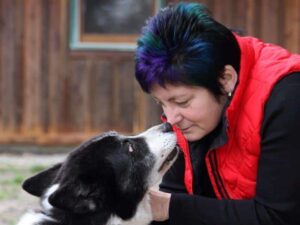
Interview with Dawne Deeley, TsarShadow Buhund Breeder | 30 Years of canine excellence, health, and progress.

Discover FABRAJ Norwegian Buhunds with breeder Faye Adcox. From Wyoming, Delaware, she shares insights on the breed’s health and versatility.
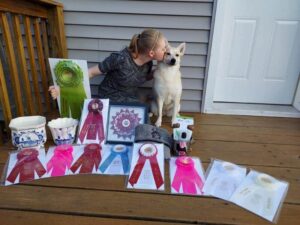
Interview with a Junior Handler, Micaela Kenyon. Micaela shares her thoughts on various topics regarding the Junior Showmanship ring.
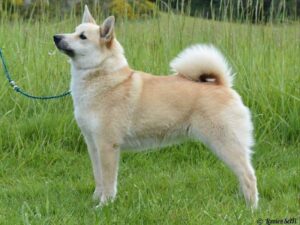
Discover the rich history and versatile traits of Norwegian Buhunds – from viking companions to modern-day helpers. Learn more!
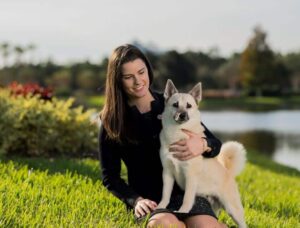
Interview with Herding Group Breeder Amie McLaughlin – I’ve been in dogs for 20 years. I started in 4-H, which led me to become interested in

Dan Sayers is the Editor-in-Chief of SHOWSIGHT digital and print publications. He received a B.S. from Drexel University where he studied interior architectural design. His professional career has allowed him to develop his planning, problem-solving, and project management skills, which were employed in the office, educational, and financial sectors. While working as a project manager, he earned a Graphic Design Certificate from the University of the Arts and began creating ads for many of America’s top-winning show dogs. Through this work, Dan became Editor-in-Chief of the nation’s first online-only dog show publication. His current role expands on this experience and broadly extends to cover the sport of dogs in Companion and Performance events as well as all aspects of Conformation.
Dan is a long-time member of the Irish Water Spaniel Club of America and is the organization’s current AKC Delegate and Archivist/Historian, as well as a club-approved Breed Mentor. From 2000-2010, he was the club’s AKC Gazette Columnist. He breeds Irish Water Spaniels under the Quiet Storm prefix and has judged the IWSCA National Specialty Sweepstakes twice. Dan is a member of the Morris and Essex Kennel Club as well as the Dog Writers Association of America, which recognized his illustrations in the award-winning canine compendium, the Encyclopedia of K-9 Terminology.
The best way to ensure a long and happy relationship with a purebred dog is to purchase one from a responsible breeder. Not sure where to begin?
Contact the National Parent Club’s Breeder Referral Program, which is listed on the AKC Breeder Referral Contacts page.
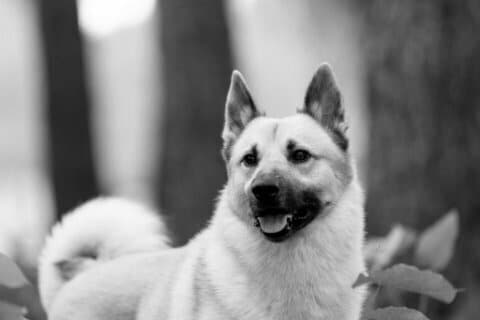
"*" indicates required fields
Showsight Magazine–the world’s most influential purebred dog publication since 1992. Each issue reaches a global audience dedicated to preserving the history and health of purpose bred dogs. Filled with award-winning editorial focused on news and insights from the dog show community, top breeders, handlers, AKC Judges, and more!